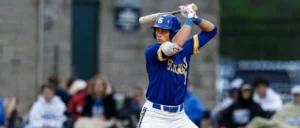Fencing is a dynamic blend of athleticism and strategy, often called “physical chess” for good reason. Every bout demands sharp thinking, precise movement, and acute awareness of your body and surroundings. While it may appear to centre around sharp weapons like the foil, épée, and sabre, fencing is far more than just swordplay. It’s a full-body sport where the arms, feet, eyes, and mind must work in perfect harmony.
Becoming a good fencer involves synchronising the entire body in complete focus. In this journey, one of the first and most important lessons is coordinating the movements of the hands with observing the eyes.
Foot Placement Training
Before kids ever step onto the strip to fence their classmates, they first learn proper foot placement in their fencing sport classes. That’s because before anyone can pick up a sword and compete, they need to be confident moving on the strip.
The forward and backwards shuffling movements require training from early on in a fencer’s journey. These movements are foundational, over which subsequent techniques can be layered.
Visual Tracking
Any fencing bout involves sparring with the sword and watching the opponent’s moves. It is essential to be conscious of your movements, but even more important to analyse your adversary’s motions and jabs in a bout.
Fencing makes one go beyond just seeing; one learns how to observe. Fencers observe each other, the shifts in their bodies, the changes in the angles of the hands, and other such details.
Stance
The fencing stance is unique, feet apart, knees bent, and an outstretched arm with a weapon. This stance takes practice to perfect and be comfortable to fence for extended periods, such as in épée.
Such a stance involves being aware of the body and the position of each part in relation to the other. During fencing sport classes, this training builds hand-eye coordination and a mindful way of orienting one’s body.
Bouts And Simulations
There’s nothing like good practice in building hand-eye coordination and taking steps toward becoming a skilled fencer. When your child learns individual skills in their fencing sport classes, they can connect the dots by applying those skills during live bouts.
Many fencing centers also include tournament-style simulations, which help boost confidence for real competitions. These sessions are an excellent opportunity to fine-tune stances, improve technique, and sharpen strategy.
Agility
Fencing teaches one to be quick on their feet, both in their movements and thinking. Fencers become agile in the fluidity of their body movements. In fencing sport classes, fencers learn to anticipate the opponent’s moves by observing how their body is poised and the direction of their aim. The quick thinking and implementation required in fencing is unmatched – this improves cognitive and flexibility like nothing else.
Not just that, this agility extends to one’s decision-making as well. Fencing makes one mindful of one’s strengths and weaknesses, and helps one tackle situations calmly and collectedly.
Conclusion
A brisk, energetic, and aware fencer has mastered the mind and the body. This begins with learning one’s hand-eye coordination and stance. This journey of self-discovery and development commences with baby steps. We at MFC ensure your fencing story is one of success, whether that is competitively or just to bring out your best version for your happiness. Check out the timings for fencing sport classes at both our New Jersey and New York locations!





Be First to Comment